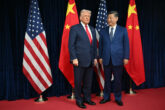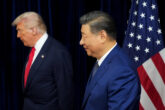July 31, 2018
Washington Has to Learn Pyongyang’s Rules
Negotiating with North Korea is a tricky game, and the United States is already behind.
Nuclear diplomacy with North Korea is not in peril yet. It’s exactly where Pyongyang wants it to be—and when Pyongyang sets the pace of negotiations, they’re bound to be tricky. Both the United States and North Korea will do and say things that will offend and frustrate the other without fully understanding the cultural and tactical roots of each other’s behavior. Negotiating with Pyongyang comes with unique twists and turns, delays, and psychological warfare that will inevitably frustrate U.S. negotiators. Driving this behavior is the North’s determination to never again be dragged around by a bigger power after centuries of being caught between neighboring giants. North Korea has come out ahead in the initial rounds—but the game has only just started.
The lack of real progress since the summit between U.S. President Donald Trump and North Korean leader Kim Jong Un in Singapore on June 12 shouldn’t be a surprise. Pyongyang reportedly continues to conduct business as usual because of the absence of a real nuclear deal with Washington (although it’s still violating U.N. Security Council resolutions), is taking unilateral steps disguised as denuclearization without engaging in credible nuclear negotiations with Washington or allowing independent verification measures, and has been dragging its feet on returning the remains of U.S. troops killed during the Korean War. Fresh technological achievements have given the regime new confidence in its nuclear ambitions and leverage during negotiations.
The frustration, disappointment, and even shock felt by the U.S. negotiating team and in Washington circles are understandable. But they were foreseeable. The current bumps and diplomatic standstill are largely a result of the Singapore statement. The problem was not that it was a vague communiqué—it was clear even before the summit that a follow-on nuclear deal would be negotiated afterward. Instead, the issue is the order of agreed points, which has caused confusion and misinterpretation. For the first time in the history of negotiations, Washington essentially accepted, whether blindly or wittingly, Pyongyang’s wish list on sequencing: 1) normalization of bilateral relations, 2) establishment of a peace regime on the Korean Peninsula, and then 3) “complete denuclearization.”
Read the Full Article at Foreign Policy
More from CNAS
-
Chinese Maker of Bitcoin-Mining Machines Is a Security Threat, Says Expert
Bloomberg News reports that a Chinese manufacturer, Bitmain Technologies Ltd, that sells most of the world’s Bitcoin-mining machines — including 16,000 of them to a venture ba...
By David Feith
-
Indo-Pacific Security / Energy, Economics & Security
North Korea’s Provocations, Power Plays, and Shifting AlliancesTensions on the Korean Peninsula have reached a new and dangerous threshold. President Lee Jae Myung is warning of a real risk of accidental military clashes, as the situation...
By Dr. Go Myong-Hyun
-
Indo-Pacific Security / Energy, Economics & Security
How to Win the Economic War with ChinaTrump's approach to China has run aground, giving Beijing unprecedented advantage in the economic conflict....
By Edward Fishman & Julian Gewirtz
-
Indo-Pacific Security / Technology & National Security
Sharper: Tech + ChinaRecent talks between President Donald Trump and Chinese Communist Party General Secretary Xi Jinping placed a spotlight on emerging technologies, from high-end chips to minera...
By Charles Horn & Sevi Silvia




